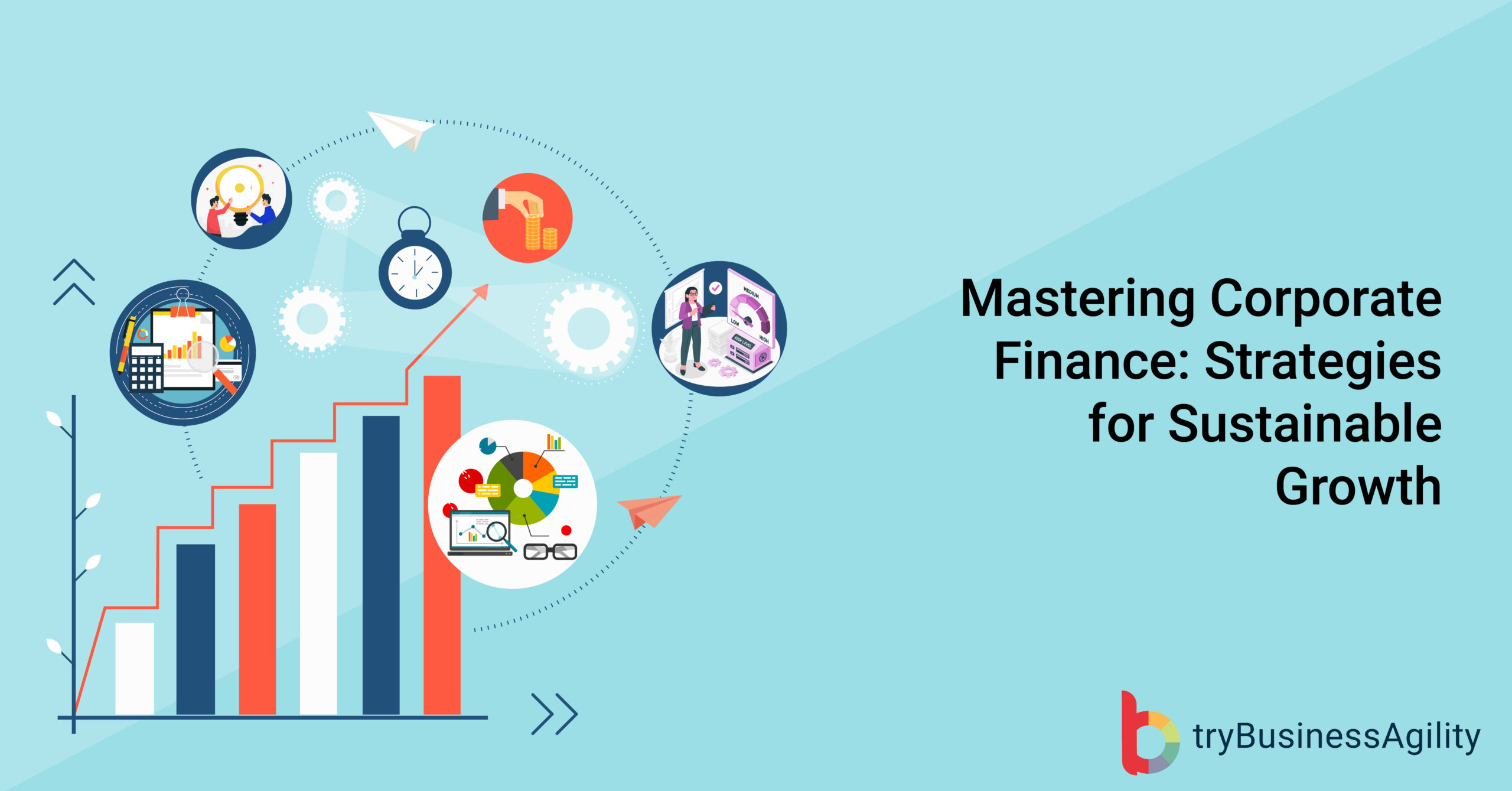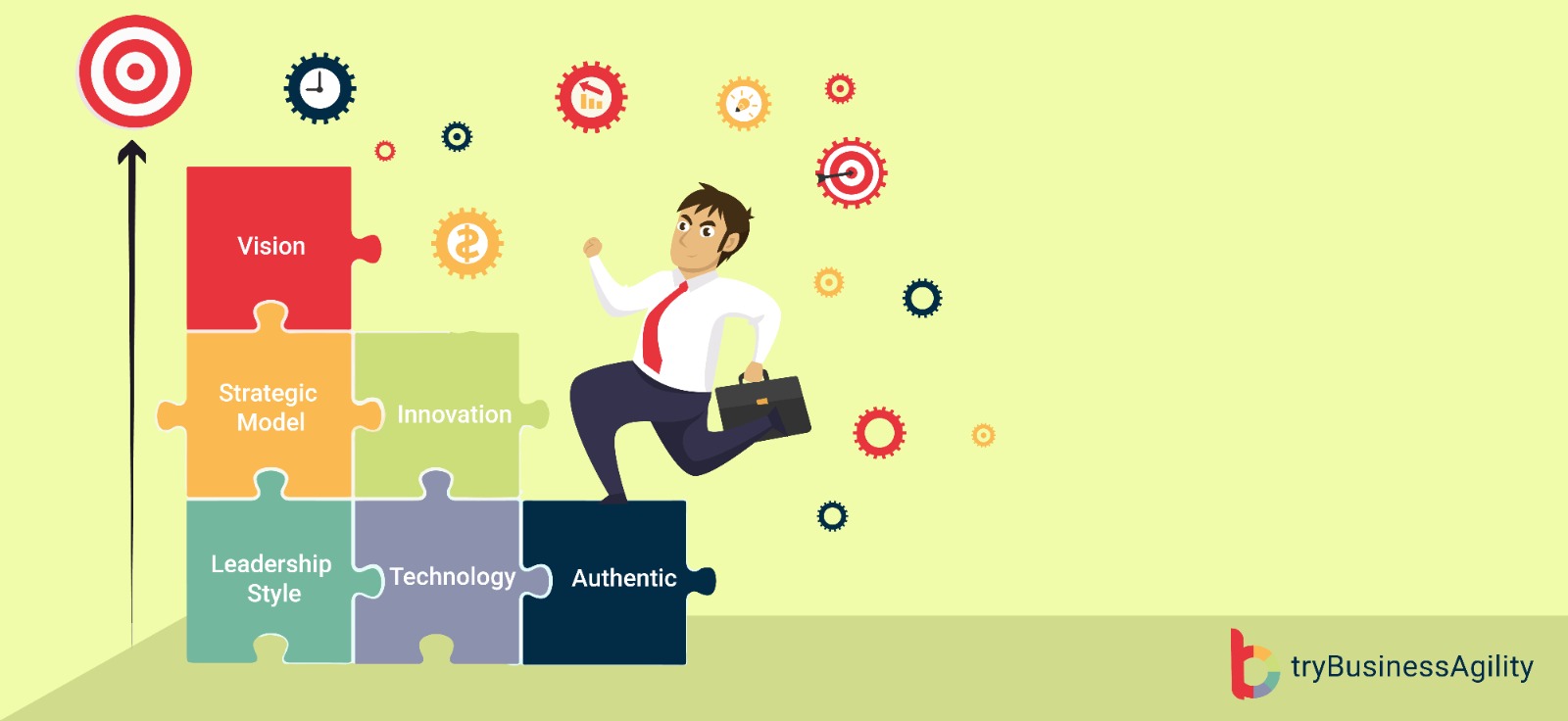As a business owner, you know that success doesn’t happen by accident. Instead, it requires planning, execution, and a clear roadmap. This is where a business strategy comes into play. This article will explore a business strategy, why it’s essential, and how to develop one for your organisation.
Introduction Of Business Strategy
At its core, a business strategy is a plan for achieving your business goals. It’s a set of guiding principles that help you make decisions, allocate resources, and focus your efforts. Your business strategy should align with your vision and mission statement and define the methods and tactics you need to take to achieve your desired outcomes.
Components of a Business Strategy
A well-defined business strategy consists of several key elements, including:
•Vision and Mission Statement:
This sets your organisation’s direction and purpose.
•SWOT Analysis:
A SWOT analysis helps you identify your organisation’s strengths, weaknesses, opportunities, and threats.
•Goals and Objectives:
These are the specific outcomes you want to achieve through your business strategy.
•Competitive Analysis:
Understanding your competitors and the market is critical to developing a successful strategy.
Action Plan outlines the steps you will take to achieve your goals and objectives.
Developing a Successful Business Strategy
Creating a successful business strategy is a time-consuming and complex process. Here are some tips to help you develop a winning strategy:
1. Understand Your Target Audience:
Knowing your customers’ needs is essential to developing a strategy that resonates with them.
2. Conduct a Thorough Analysis:
Conduct a SWOT, competitive, and market analysis to identify opportunities and threats. While we encourage you to analyse thoroughly, an empirical approach helps. However, a thorough examination cannot guarantee success until validation.
3. Set Clear Goals And Objectives:
Set Clear Goals And Objectives: Define specific, measurable, achievable, relevant, and time-bound (SMART) goals and objectives.
4. Develop An Action Plan:
Outline the steps you will take to achieve your goals and objectives and assign responsibilities and timelines.
5. Monitor And Adapt:
Regularly review your progress and adjust your strategy as needed to ensure you’re on track to achieving your goals.
Examples of Successful Business Strategies
Here are some examples of successful business strategies that you can draw inspiration from:
1. Apple:
Apple’s business strategy is focused on innovation, design, and branding. They create products that are not only functional but also aesthetically pleasing.
2. Coca-Cola:
Coca-Cola’s business strategy is built around its brand and marketing. They focus on creating emotional connections with their customers through their advertising campaigns.
3. Amazon:
Amazon’s business strategy is centered on customer-centricity. They focus on delivering exceptional customer experiences through personalised recommendations, fast shipping, and easy returns.
Conclusion
Developing a successful business strategy requires careful planning, analysis, and execution. Having a clear vision and mission statement, setting specific goals and objectives, and developing an action plan is essential. By following these steps and drawing inspiration from successful business strategies, you can create a roadmap to achieve your business goals and succeed in today’s competitive landscape.
Understanding the Difference between Strategy and Tactics
When achieving business goals, it is essential to understand the difference between strategy and tactics. Although they are related, strategy and tactics are two distinct concepts that work together to achieve organisational success.
Strategy is the long-term plan or roadmap for an Organisation, outlining the path it will take to reach its goals. It is a high-level plan that provides the framework for decision-making and guides the allocation of resources. A good strategy defines the direction and scope of an organisation and sets measurable goals to work towards.
Conversely, tactics are the specific actions taken to implement the strategy and achieve the goals set out in the plan. They are the detailed steps to execute the strategy and may involve a wide range of activities such as marketing campaigns, product development, cost-cutting measures, and other operational activities.
A company may envision becoming the market leader in a particular industry. To achieve this goal, the company might develop a strategy to expand its product line, improve its distribution channels, and increase its marketing efforts. The tactics used to implement this strategy include conducting market research to identify customer needs, developing new products, negotiating with suppliers to reduce costs, and implementing a targeted marketing campaign.
In summary, strategy is the overall plan that provides the direction and scope for an organisation. At the same time, tactics are the specific actions taken to implement the strategy and achieve the desired goals. By understanding the difference between these two concepts, Organisations can develop more effective plans and achieve greater success in their business endeavours
The Key Components of a Business Strategy Explained
A successful business strategy is the cornerstone of a thriving Organisation. It helps companies focus on their goals, make informed decisions, and allocate resources effectively. Here are the key components that make up a solid business strategy
1. Vision and Objectives
The vision and objectives of a business strategy provide a clear direction for the Organisation. They outline long-term goals that the company wishes to achieve. It enables managers to develop tactical instructions for tasks that must be completed. In addition, having a clear vision ensures that everyone understands the purpose and direction of the Organisation.
2. Core Values
Core values are the principles that guide a company’s actions and behaviour. They ensure everyone in the company is aligned and working towards the same goals. In addition, defining core values helps companies decide what should and should not be done
3. SWOT Analysis
SWOT analysis is a critical component of any business strategy. It involves identifying the Organisation’s strengths, weaknesses, opportunities, and threats. This analysis helps companies be self-aware and humble and identify areas where they can win and areas that must be addressed
4. Tactics and Operational Delivery
The tactical element of a business strategy sets out the operational details that define how the work should be delivered. Tactical delivery is critical for the success of any business strategy, and managers who have responsibility for tactics understand what needs to be done. This ensures that time and effort are well-spent.
5. Resource Allocation
The resource element of a business plan covers the allocation of existing resources and where additional resources will be found. Most businesses rely on many different resources, including people, technology, financial, and physical resources. A clear picture of these resources and future requirements enables leaders to see where to add more resources to achieve their goals.
6. Measurement and Analysis
Measurement and analysis are critical for evaluating how a business is performing in the business strategy. This phase emphasises the importance of defining deadlines and goals, addressing budget concerns, and staying closely aligned with the plan. Data and business intelligence platforms play a crucial role in this phase
Why Having a Well-Defined Business Strategy is Crucial for Long-Term Success
As a business owner or leader, you may have some vision for your Organisation. But have you taken the time to create a well-defined business strategy? If not, you may be putting your long-term success at risk.
In this article, we’ll explore why having a business strategy is essential and how it can help your organisation thrive.
What is a Business Strategy?
A business strategy is a roadmap that outlines how a company will achieve its goals and objectives. It includes a set of actions and initiatives that are designed to move the business towards success.
Why is a Business Strategy Important?
1. Provides Clarity and Focus
A well-defined business strategy provides clarity and focuses for your Organisation. It ensures that everyone in the company understands the direction of the business, what is expected of them, and how their work contributes to the company’s overall success.
2. Enables Effective Decision-Making
When a business strategy is in place, making decisions that align with the company’s goals and objectives becomes easier. This means that resources are allocated more effectively, and the Organisation can respond quickly to changing market conditions
3. Increases Accountability
A business strategy increases accountability at all levels of the Organisation. When everyone understands the company’s goals and objectives, they are more likely to take ownership of their work and be accountable for their results.
4. Facilitates Communication
A well-defined business strategy facilitates communication within the Organisation. It provides a common language and framework for discussions and ensures everyone works towards the same goals
5. Drives Long-Term Success
A business strategy helps ensure the organisation’s long-term success by providing a roadmap for the future. It enables the company to stay focused on its goals and objectives, even when faced with short-term challenges
How to Create a Business Strategy
Creating a business strategy does not have to be overly difficult, but it requires time and focus. Here are the steps you can take to create a well-defined business strategy:
1. Define Your Vision and Mission
Your business strategy should start with a clear vision and mission statement. This will help you define your organisation’s purpose and provide a framework for decision-making.
2. Conduct a SWOT Analysis
A SWOT analysis will help you to identify your Organisation’s strengths, weaknesses, opportunities, and threats. This information will be crucial in developing a strategy that leverages your strengths and addresses your weaknesses.
3. Set Goals and Objectives
Based on your vision, mission, and SWOT analysis, you can set specific, measurable, achievable, relevant, and time-bound (SMART) goals and objectives for your Organisation.
4. Develop Action Plans
Action plans should be developed to outline the steps required to achieve your goals and objectives. To measure progress, these plans should include timelines, responsibilities, and key performance indicators (KPIs).
5. Communicate and Implement
Once your business strategy is developed, it is essential to communicate it clearly to all stakeholders in the Organisation. This includes employees, customers, investors, and other key partners. Implementing the strategy will require ongoing communication, monitoring, and adjustment to remain relevant and practical.
Conclusion
Having a well-defined business strategy is crucial for long-term success. It provides clarity, focus, and accountability, facilitates effective decision-making and communication, and drives the Organisation towards its goals and objectives. Furthermore, by developing a business strategy, you can ensure that your Organisation is well-positioned to succeed in today’s competitive business landscape.
How to Develop a Successful Business Strategy
Our goal is to help the next generation of Organisations. A well-crafted business strategy is crucial to the success of any Organisation. We will discuss the critical steps involved in building a successful business strategy
1. Defining Your Vision
Defining your vision is the first step in developing a successful business strategy. This includes identifying your company’s values, desired market position, value proposition, ideal customer profile, and core market. Your vision sets the foundation for the rest of your business strategy.
2. Setting Your Objectives
The next step is to set your objectives. These objectives should be realistic and focus on revenue, market penetration, growth, or shareholder value creation. It is essential to remember that a business strategy aims to answer a series of questions about how a business can compete, grow, and prosper.
3. Analysing Your Business and Your Marketplace
After defining your vision and objectives, the next step is to analyse your business and marketplace. Again, a SWOT analysis is key to understanding where your business is strong or weak. This analysis should consider not only your company’s internal situation but also the marketplace’s external situation
4. Defining Your Competitive Advantage
The fourth step is to define your competitive advantage. This involves answering how you will compete in your defined market and what sets you apart. This could be your unique selling point (USP), demand creation, sales growth, utilisation of new technologies, or higher margins.
5. Building a Framework
The final step is to build a framework. This involves aligning the needs and vision of each department within your Organisation with the Organisational goals. The framework translates the business strategy into specific departmental objectives.
In conclusion, building a successful business strategy involves defining your vision, setting objectives, analysing your business and marketplace, defining your competitive advantage, and building a framework. Remember, a well-crafted business strategy can help your Organisation stay focused and achieve long-term success.
tryBusinessAgility, a flagship of tryScrum. Our mission is to discover, preserve and distribute knowledge and capabilities to enable the next generation of organisations to be capable and resilient.
Contact
Plot : 2, F1 - Studio, Nest Gaura, Sundaram Colony, Chennai - 600073
support@trybusinessagility.com
+91 9789490848
© 2024 Copyright trybusinessagility.com All Rights Reserved.







